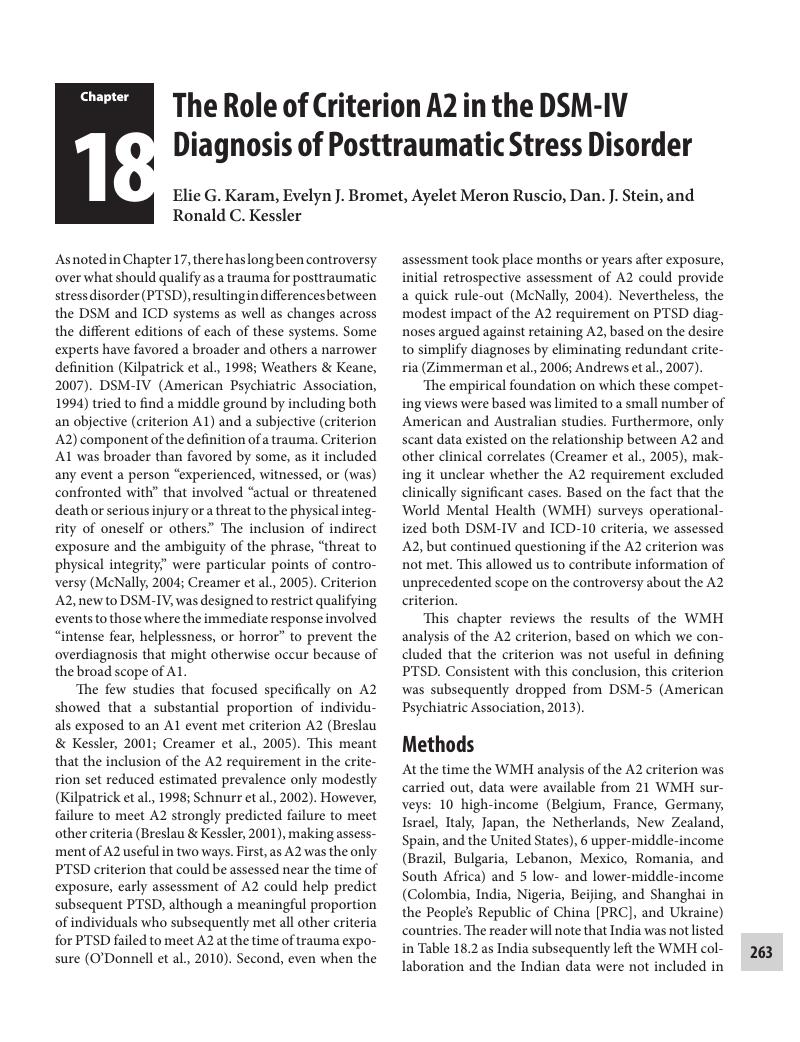 Trauma and Posttraumatic Stress Disorder
Trauma and Posttraumatic Stress Disorder Book contents
- Trauma and Posttraumatic Stress Disorder
- Trauma and Posttraumatic Stress Disorder
- Copyright page
- Contents
- Contributors
- Foreword
- Acknowledgments
- Section 1 Introduction
- Section 2 Epidemiology of Trauma Exposure
- Section 3 Epidemiology of Posttraumatic Stress Disorder
- Section 4 Factors Influencing the Onset and Course of Posttraumatic Stress Disorder
- Section 5 Dissecting the Clinical Picture
- Chapter 17 DSM-5 and ICD-11 Definitions of Posttraumatic Stress Disorder: Investigating “Narrow” and “Broad” Approaches
- Chapter 18 The Role of Criterion A2 in the DSM-IV Diagnosis of Posttraumatic Stress Disorder
- Chapter 19 Threshold versus Subthreshold Posttraumatic Stress Disorder
- Chapter 20 Dissociative versus Nondissociative Posttraumatic Stress Disorder
- Chapter 21 Simple versus Complex Posttraumatic Stress Disorder
- Section 6 Conclusions and Future Directions
- Index
- References
Chapter 18 - The Role of Criterion A2 in the DSM-IV Diagnosis of Posttraumatic Stress Disorder
from Section 5 - Dissecting the Clinical Picture
Published online by Cambridge University Press: 26 July 2018
- Trauma and Posttraumatic Stress Disorder
- Trauma and Posttraumatic Stress Disorder
- Copyright page
- Contents
- Contributors
- Foreword
- Acknowledgments
- Section 1 Introduction
- Section 2 Epidemiology of Trauma Exposure
- Section 3 Epidemiology of Posttraumatic Stress Disorder
- Section 4 Factors Influencing the Onset and Course of Posttraumatic Stress Disorder
- Section 5 Dissecting the Clinical Picture
- Chapter 17 DSM-5 and ICD-11 Definitions of Posttraumatic Stress Disorder: Investigating “Narrow” and “Broad” Approaches
- Chapter 18 The Role of Criterion A2 in the DSM-IV Diagnosis of Posttraumatic Stress Disorder
- Chapter 19 Threshold versus Subthreshold Posttraumatic Stress Disorder
- Chapter 20 Dissociative versus Nondissociative Posttraumatic Stress Disorder
- Chapter 21 Simple versus Complex Posttraumatic Stress Disorder
- Section 6 Conclusions and Future Directions
- Index
- References
Summary

- Type
- Chapter
- Information
- Trauma and Posttraumatic Stress DisorderGlobal Perspectives from the WHO World Mental Health Surveys, pp. 263 - 272Publisher: Cambridge University PressPrint publication year: 2018
References
- 1
- Cited by


